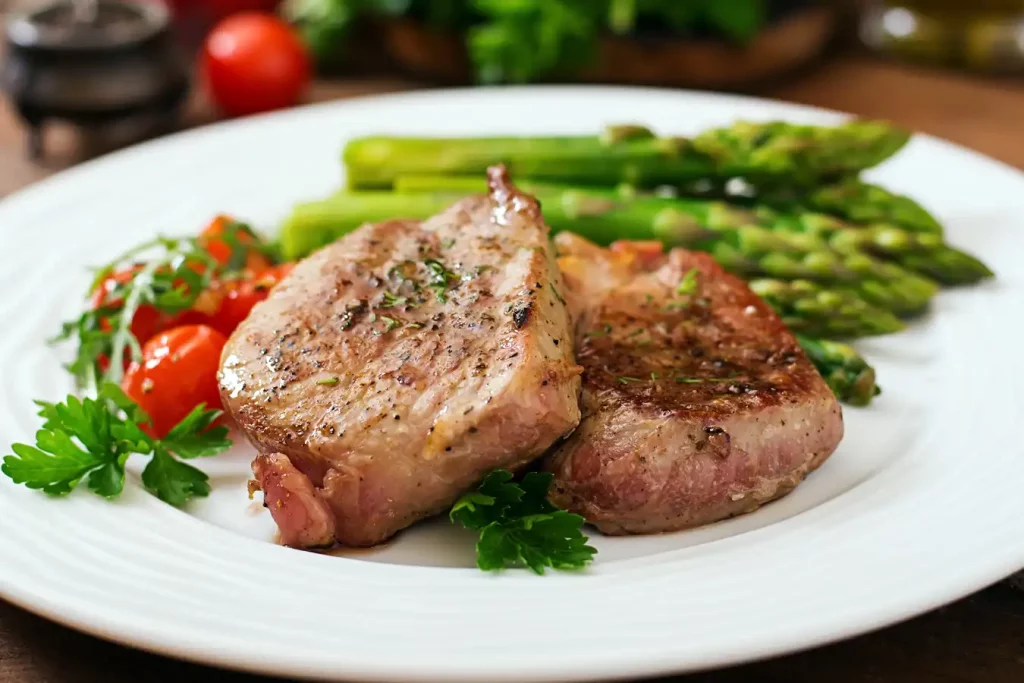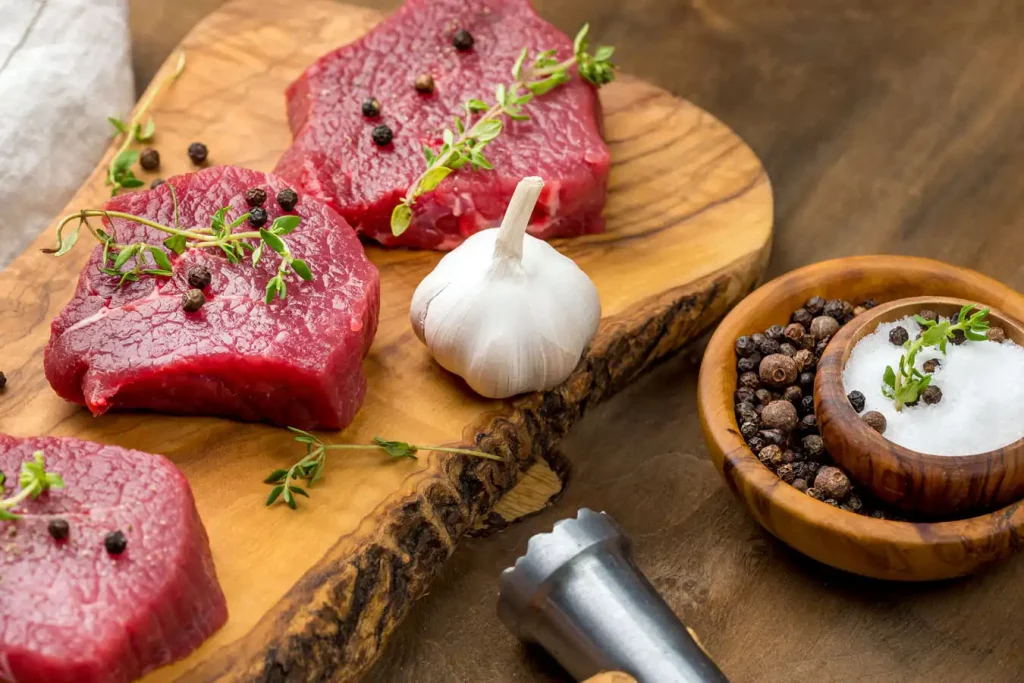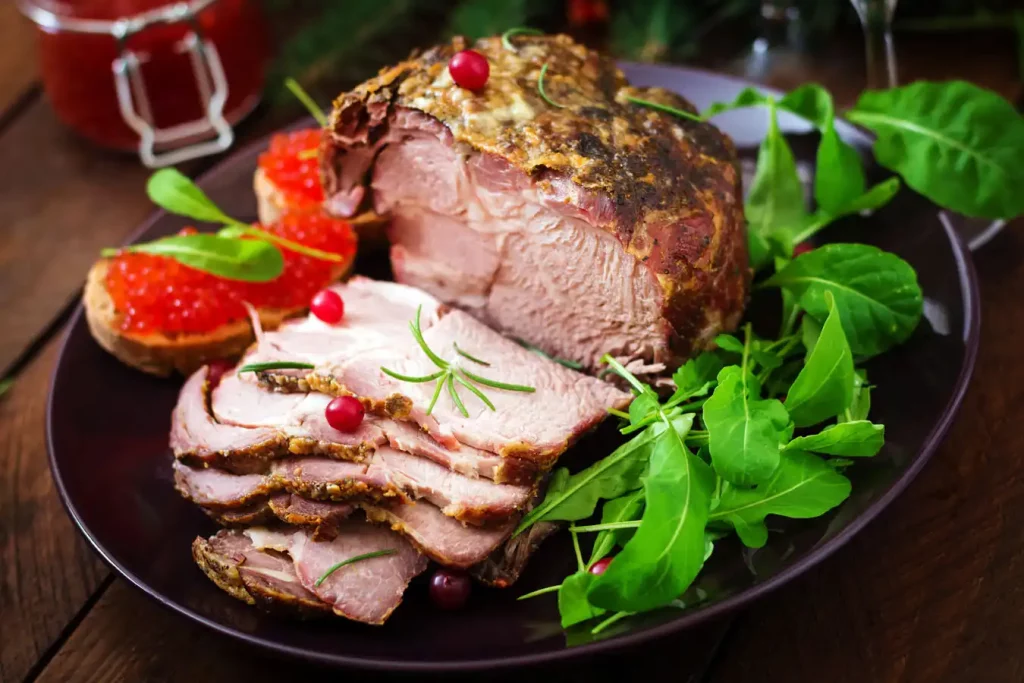Ever wondered how to cook filet mignon in a cast iron skillet to perfection?
You’re not alone, and this article is designed to unravel this mystery for you.
We’re about to embark on a culinary journey, steeped in sizzling secrets and mouth-watering magic.
From the seasoned outdoorsman to the urban kitchen warrior, our easy-to-follow guide will transform your filet mignon game.
Get ready to uncover the art of making your steak juicy, tender, and brimming with flavor, right from the comfort of your home.
Buckle up, folks – it’s time to heat up your cast iron skillet and venture into the realm of exquisite cooking!
Understanding Filet Mignon and the Cast Iron Skillet
Before we dive into the cooking process, it’s important to understand what makes filet mignon special and why a cast iron skillet is the ideal tool for the job.
What is Filet Mignon?
Filet mignon is a premium cut of beef taken from the smaller end of the tenderloin, located along the spine of the cow. Its French name translates to “dainty fillet,” perfectly describing its small size and tender nature. What sets filet mignon apart from other cuts is its lean composition and buttery texture. However, because it has less fat marbling than other cuts, it’s crucial to cook it correctly to keep it tender and juicy.

Why Use a Cast Iron Skillet?
Cast iron skillets are a kitchen workhorse, loved by chefs and home cooks alike. Their ability to retain and distribute heat evenly makes them an excellent choice for cooking filet mignon. The high heat of a cast iron skillet can quickly sear the outside of the filet, locking in its natural juices and creating a flavorful crust. Plus, the skillet can then be transferred to the oven for a consistent and even cook throughout the steak.
The Perfect Technique: Cooking Filet Mignon in a Cast Iron Skillet
Mastering the art of cooking filet mignon in a cast iron skillet is easier than you might think. Follow the upcoming step-by-step guide, and you’ll be on your way to serving a restaurant-quality steak from the comfort of your own home. From prepping your filet to serving it up in style, we’ve got you covered.
Stay tuned for the next part of this guide where we’ll reveal the process, tips, and tricks to make your filet mignon unforgettable. After all, with a cut of beef this exquisite, you’ll want to ensure you’re doing it justice.
From personal experience, there’s nothing quite like the sight of a filet mignon sizzling away in a hot cast iron skillet. The aroma that fills the air is tantalizing, and the end result is truly worth savoring. I’m looking forward to sharing this culinary journey with you, as we explore the art of cooking the perfect filet mignon together.
Learn more: Cook Biscuits in a Cast Iron Skillet
Necessary Supplies for Cooking Filet Mignon in a Cast Iron Skillet
Before we begin, let’s gather all the necessary tools and ingredients. You will need:
- Two 6-8 ounce filet mignon steaks
- A cast iron skillet
- 2 tablespoons of cooking oil (canola, vegetable, or grapeseed oil are great options)
- Salt and pepper to taste
- 2 cloves of garlic (optional)
- A few sprigs of fresh rosemary or thyme (optional)
- 2 tablespoons of unsalted butter (optional)
- A meat thermometer

Read more: How to Cook a Porterhouse Steak Without a Cast Iron Skillet
Step-by-step Guide to Cook Filet Mignon in a Cast Iron Skillet
Now that we have everything in place, let’s get started. I promise you’re in for a treat.
Step 1: Preparing the Filet Mignon
Remove your filet mignon from the refrigerator and allow it to come to room temperature for about 30 minutes. This ensures even cooking. Season each side generously with salt and pepper. If you’re using garlic and herbs, mince the garlic and chop the herbs now.
Step 2: Preheating the Skillet
Place your cast iron skillet on medium-high heat and add the cooking oil. You want the skillet to be piping hot to achieve a beautiful sear on your steaks.
Step 3: Cooking the Filet Mignon
Once the skillet is hot, carefully place your seasoned steaks in the pan. They should sizzle on contact. Sear each side for 2-3 minutes for a golden brown crust. If you’re using butter, garlic, and herbs, add them now and baste the steaks for extra flavor.
Step 4: Checking the Temperature
After the steaks are seared, check the internal temperature using a meat thermometer. Insert it into the side of the steak, and aim for 130-135°F for medium-rare or 145°F for medium.
Remember, the steaks will continue to cook slightly after removed from heat, so it’s okay to take them off a few degrees before they reach your preferred doneness.
Step 5: Resting and Serving the Filet Mignon
Once the steaks reach the desired temperature, remove them from the skillet and let them rest for 5-10 minutes. This allows the juices to redistribute throughout the steak, ensuring every bite is moist and flavorful.
Serve the filet mignon with your favorite side dishes. Some popular options include roasted potatoes, steamed asparagus, or a simple green salad. Enjoy your perfectly cooked filet mignon!
This guide takes you through each step of the process with careful attention to detail. Remember, the key to a great filet mignon is not to rush. Take your time, be attentive, and you’ll have a dish that’s sure to impress.
Learn more: How to Make Steak in a Cast Iron Skillet
Additional Tips for Cooking Filet Mignon in a Cast Iron Skillet
When you’re dealing with a prime cut of beef like filet mignon, every detail counts. Here are a few additional tips to ensure a perfect result every time:
- Patience is key: Let your steaks come to room temperature before cooking, and always let them rest after cooking. This will make your steak more tender and flavorful.
- Season generously: A good piece of steak doesn’t require fancy seasonings. Often, salt and pepper are all you need. However, feel free to experiment with different herbs and spices to find your perfect blend.
- Don’t forget to baste: If you’re using butter, garlic, and herbs, basting the steak as it cooks can infuse it with fantastic flavor.
- Use a meat thermometer: Don’t leave it to guesswork. A meat thermometer takes the mystery out of cooking steak to your preferred doneness.
- Maintain your cast iron skillet: A well-seasoned cast iron skillet doesn’t just cook your food. It imparts it with a unique flavor that gets better with every use. After cooking, clean your skillet with a mild dish soap, dry it thoroughly to prevent rust, and oil it lightly to maintain its seasoning.
In short, Sear filet mignon in a hot cast iron skillet for 2-3 minutes per side, then finish in the oven until it reaches the desired doneness.
Relevant terms: cook filet mignon in cast iron skillet, filet mignon cast iron recipe, how to cook filet mignon cast iron, cast iron filet mignon oven, how to cook beef tenderloin steaks in cast iron skillet, filet mignon in cast iron skillet, how to cast iron cook filet mignon, cast iron filet mignon, filet in cast iron, cook filet in cast iron, cooking filet mignon on cast iron.
Read more: Cook Steak in the Oven
FAQs about Cook Filet Mignon in Cast Iron Skillet
Do you use oil or butter for steak in a cast iron skillet?
How does Gordon Ramsay cook filet mignon in a pan?
How many minutes do you cook a steak on a cast iron skillet?
How to cook a filet mignon in a cast iron skillet Bobby Flay style?
Conclusion
Cooking a filet mignon in a cast iron skillet is an art form that any home cook can master. It requires patience, precision, and attention to detail, but the result is truly worth it.
We’ve covered everything from selecting and preparing your steaks, understanding the unique qualities of your cast iron skillet, to searing and cooking your filet mignon to perfection. Each step plays an essential role in creating a dish that is more than just a meal—it’s an experience.
Remember, this guide is just a starting point. Cooking is a journey, and every journey is a chance to learn, grow, and discover new flavors. Don’t be afraid to experiment with different seasonings, sauces, or side dishes. Find what works for you and, most importantly, enjoy the process.
After all, food is not just about sustenance. It’s about the joy of creating something with your own hands, the satisfaction of seeing others enjoy your creations, and the endless quest for the perfect bite. Happy cooking!
Learn also: How to Make Biscuits While Camping


